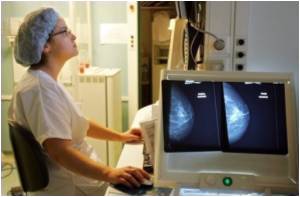A new research has revealed that removing an extra two millimetres around an area of invasive breast cancer is sufficient to minimize any residual disease in 98 per cent of patients.

"Breast conserving surgery followed by radiotherapy is a well-established alternative to breast removal and studies have demonstrated similar survival rates in patients undergoing these procedures," said lead author Stephen Ward.
"However patients undergoing breast conserving surgery are more likely to have recurrent cancer and the amount of tissue removed around the tumor, known as the free margin, remains controversial.
"A survey of 200 UK breast surgeons published in 2007 revealed wide variations in what they considered to be an adequate margin, with 24 percent wanting a clear margin of 1mm and 65 percent wanting a margin of 2mm or more," he said.
The Good Hope team carried out further excision specimens on 31 percent of the women who had received breast-conserving surgery to check for residual disease, obtaining 139 samples from 93 patients.
Of these, 52 samples were from patients who had received surgery for non-invasive cancer, where the cancer is confined to the milk ducts or lobules, and 87 were from patients who had had invasive cancer, where the cancer had spread to the surrounding breast tissue.
Advertisement
However, when it came to the women who had received surgery for non-invasive cancer, residual disease was higher and the pattern was less than clear. Incidence ranged from 0percent at more than 5mm to 57 percent when the margin was between 0.1 to 0.9mm, but 44 percent where no margin was involved.
Advertisement
They found that women with a close margin of less than 2mm were more likely to be associated with large grade three tumors than the clear margin group and with lymphovascular invasion and nodal involvement.
The findings were published in the International Journal of Clinical Practice.
Source-ANI















